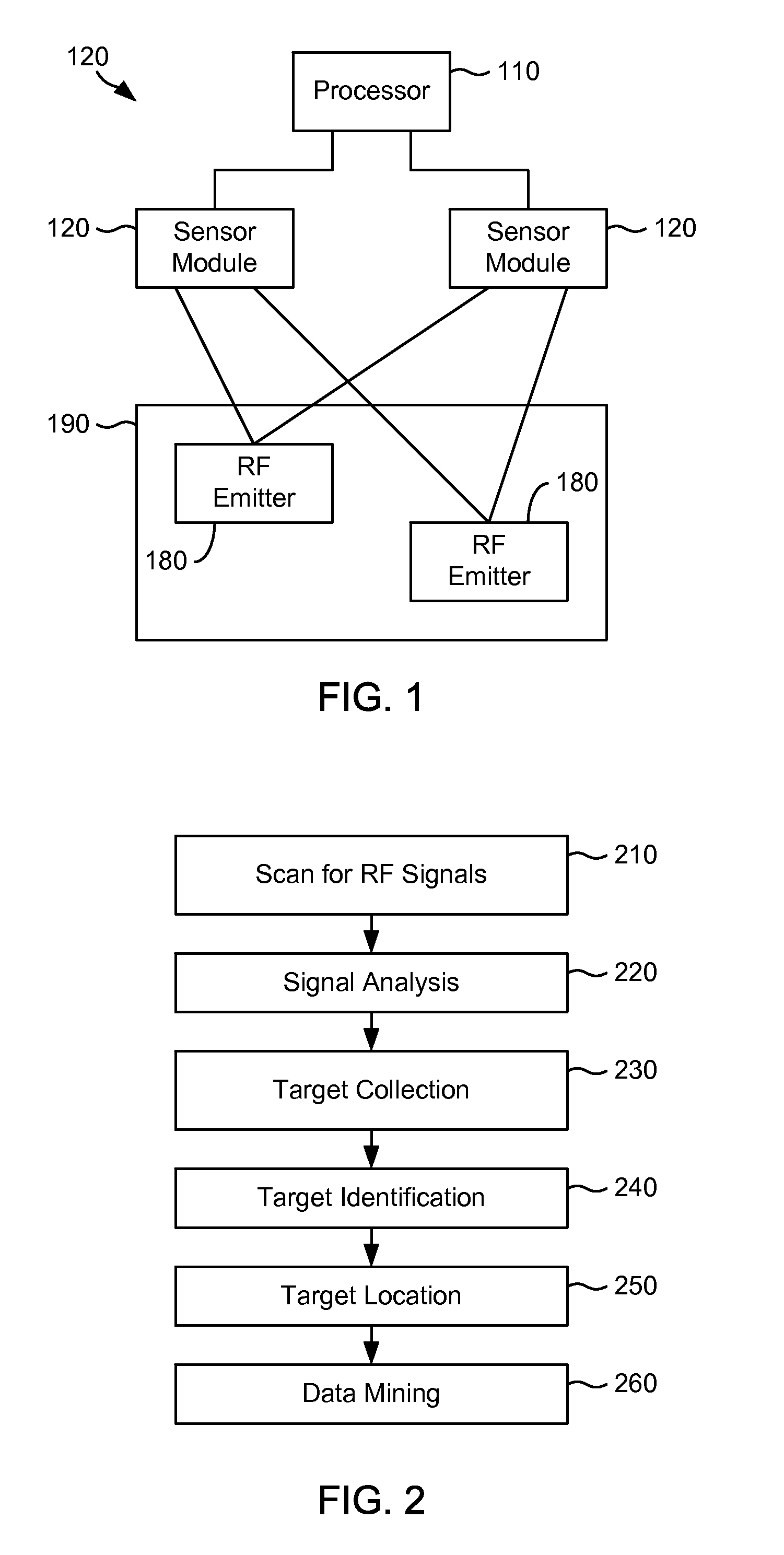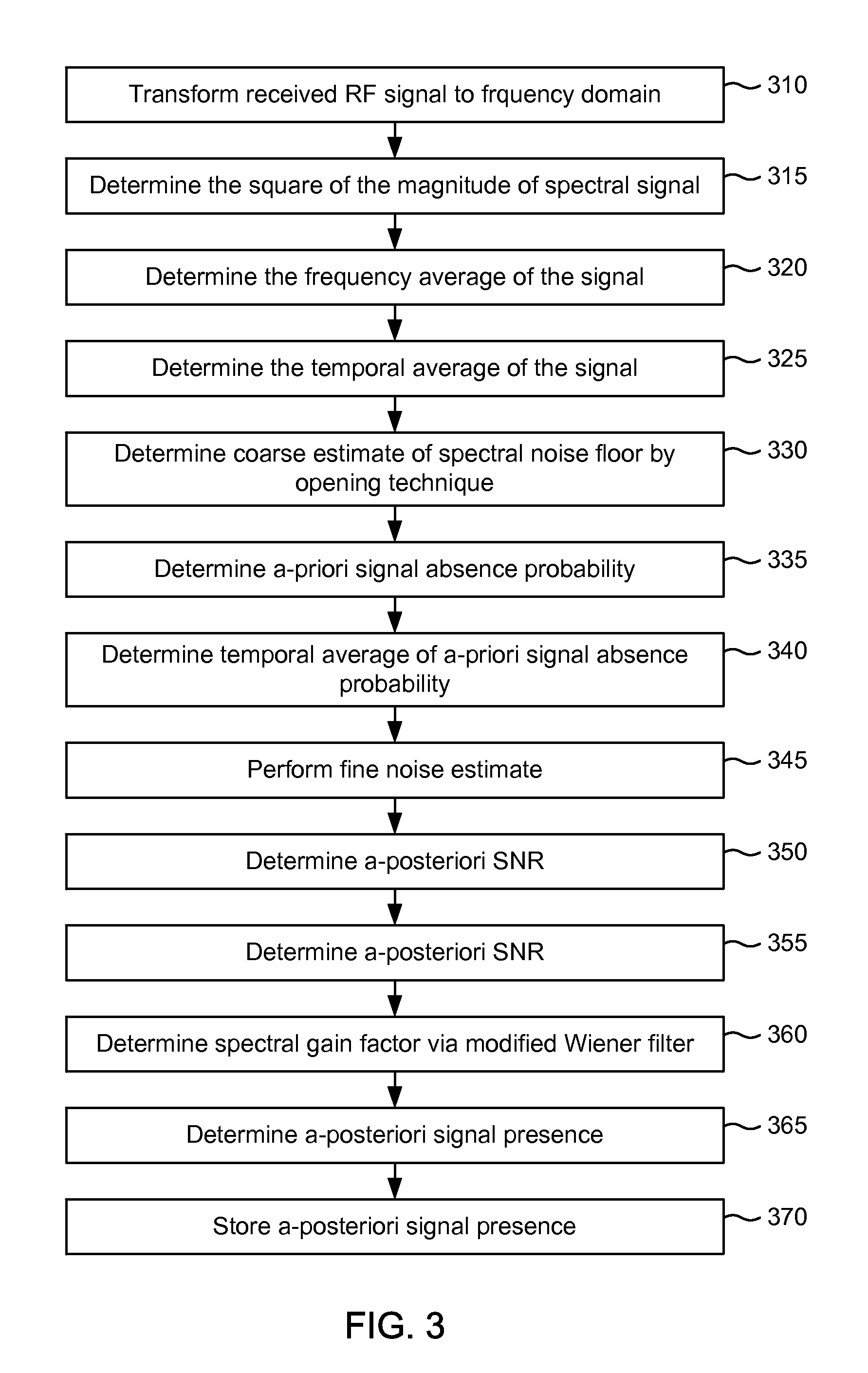Autonomous spectral harvesting system
- Summary
- Abstract
- Description
- Claims
- Application Information
AI Technical Summary
Benefits of technology
Problems solved by technology
Method used
Image
Examples
Embodiment Construction
[0030]The present inventor has realized that a modified version of minima controlled recursive averaging (MCRA) may be applied for estimating the spectral noise floor for RF signals. In particular, the spectral noise floor for RF signals is determined based on signal processing including open controlled recursive averaging (OCRA), which uses open processing, similar to that used in image processing, for a coarse noise estimate, in addition to controlled recursive averaging. OCRA allows for a spectral noise floor determination which is appropriate to RF signals. The OCRA processing further may include a fine noise estimate for estimating the spectral noise floor by applying a weighted average of the coarse noise estimate bias and the instantaneous magnitude of the frequency signal.
[0031]The OCRA processing provides an improved computation of the spectral noise floor appropriate for RF signal processing in a non-stationary RF signal environment whether or not there is any actual RF si...
PUM
 Login to View More
Login to View More Abstract
Description
Claims
Application Information
 Login to View More
Login to View More - R&D
- Intellectual Property
- Life Sciences
- Materials
- Tech Scout
- Unparalleled Data Quality
- Higher Quality Content
- 60% Fewer Hallucinations
Browse by: Latest US Patents, China's latest patents, Technical Efficacy Thesaurus, Application Domain, Technology Topic, Popular Technical Reports.
© 2025 PatSnap. All rights reserved.Legal|Privacy policy|Modern Slavery Act Transparency Statement|Sitemap|About US| Contact US: help@patsnap.com



